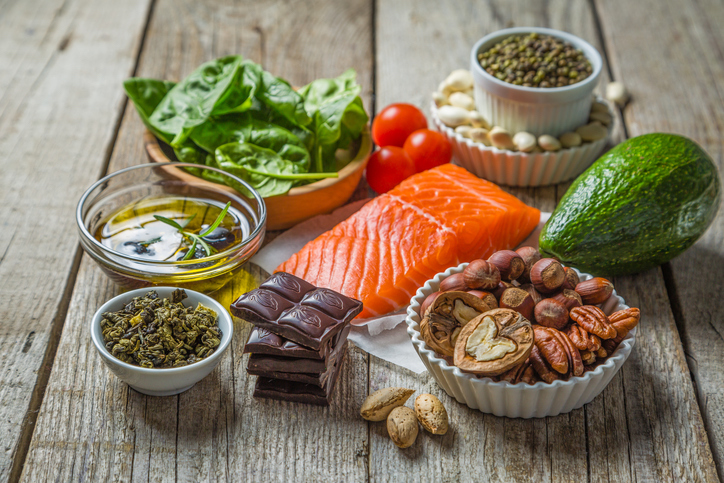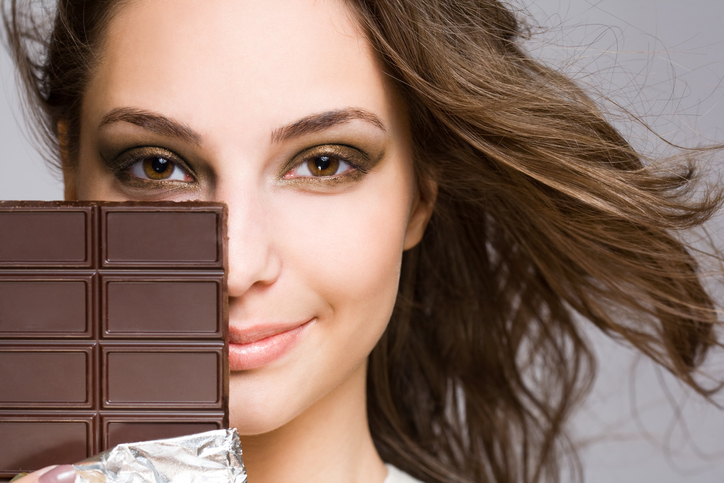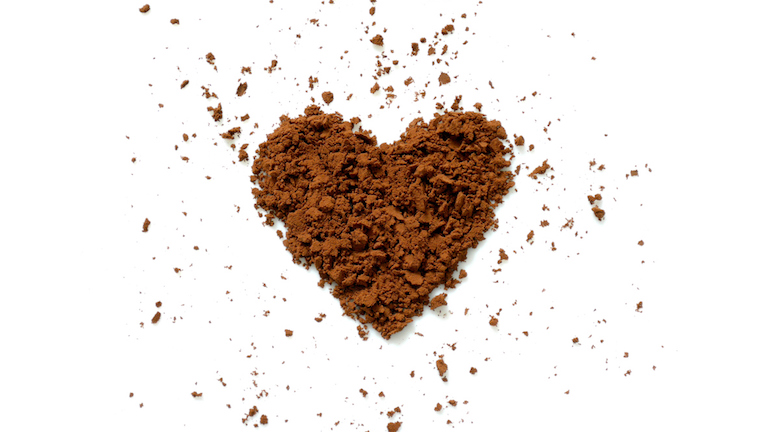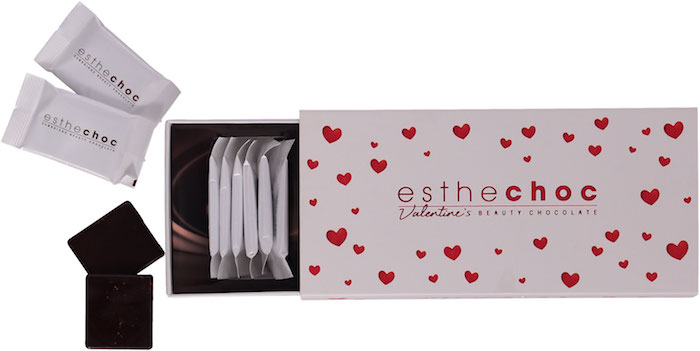Buying your loved one a bog-standard chocolate selection is now akin to an insult thanks to the additives, fats and sugars it could contain. Enter a new breed of Super Chocolate that’s not only sexy, it has clinically proven health benefits
You’ve probably heard – superfoods are big news. These usually come in the form of green, or beige or orange or yellow powders that contain concentrated forms of foods famed for their medicinal qualities.
With names like maca, lucuma, chlorella and spirulina, these are not a family of posh girls, but some of the most concentrated forms of nutrition on the planet – or so their marketing would have us believe.
As a rule, such foods are not generally easy on the palate, often requiring the addition of other tastier foods to make them vaguely fit for the human taste bud.
But there is one superfood with research backing up its good-for-you CV that actually tastes delicious. So delicious in fact, that many of us can’t get enough of it.
That superfood is chocolate.
With proven benefits including helping lower cholesterol, reducing high blood pressure and preventing cognitive decline, the high cocoa, low sugar variety has landed chocolate into the hall of fame of foods essential for a healthy diet along with olive oil, oily fish, nuts and seeds and green vegetables.
Mind you, the health benefits of chocolate are only valid for low sugar, dark varieties with at least 70 per cent cocoa solids – not the bog standard Selections box you might be thinking of gifting this Valentine’s Day.
Cocoa in such dark chocolate is full of polyphenols, which are powerful antioxidants that can neutralise free radical molecules and reduce inflammation in the body. It is the polyphenols in dark chocolate that give it the bitter taste – and the health benefits

The new generation Super Chocolate
Now, a new generation of chocolate is aiming to increase the natural benefits of chocolate by adding even more nutrients to it.
For example, with 2017 being the year of gut health, a number of chocolate companies have added probiotics to chocolate. Probiotics usually come in the form of fermented foods and supplements that help re-colonise the friendly bacteria in our guts. Better gut bacteria has been associated with benefits such as improved digestion and immunity and mind health. Ohso chocolate for example, contains over one billion live Lactobacillus and Bifidobacterium bacteria and is said to be three times more effective in delivering these to the gut than the popular yoghurt and milk alternatives also containing such cultures. The bars also contains added vitamins B complex, D and E. Meanwhile brands such as Doisy & Dam, Om Bar and Raw Halo add fashionable superfoods such as maca, pink Himalayan salt and açai berries to their high cacao chocolate bars.
The anti-ageing chocolate created by a doctor
The latest generation chocolate source goes even further claiming to have anti-aging benefits that have been shown in scientific trials to help improve the skin.

Esthechoc comes in a box of 21 tiny 7.5 gram serves designed to be eaten daily. It contains high levels of the powerful antioxidants astanxanthin, a strong anti-inflammatory substance that’s 6000 times stronger than vitamin C as well as cocoa polyphenolic epicatachins, antioxidants that help increase oxygen transport in blood.
In addition, its creators, one of which is a medical doctor have patented a ‘micellar technology’ that is used in the chocolate to make these substances more bioavailable to skin.
Bioavailabity simply means the measure of what is detected in the blood after consumption and is affected by such factors the format of the ingredients, the acidity of the stomach and its absorption in the intestinal tract. You might for example, be consuming all the antioxidant rich chocolate you can (well, maybe not because calories matter too) but if it’s not bioavailable to your body, you won’t be absorbing the nutrients you need from it.
a 7.5 gram serve of esthechoc is 38 calories and delivers as many antioxidants as 100 grams of regular dark chocolate which is just under 600 calories
According to its makers, the components of Esthechoc are resistant to stomach acid and are not degraded straight after absorption. Instead they go directly through the lymphatic system and from there, directly to the tissues, hence their effect on skin (see below for the clinical trials on the product).
‘When combined with astanxanthin, the active ingredient in Esthechoc, the polyphenols in the cocoa become ten times more powerful than when ingested alone’, says co-creator Dr Ivan Petyaev, who spent three years in the pathology department of Cambridge University. ‘With normal dark chocolate as little as 1-2% of active ingredients are absorbed into the bloodstream, with Esthechoc our studies showed this was increased tenfold, meaning ten times the health benefits.’
Why doesn’t eating dark chocolate deliver the same benefits?
Here’s where it gets complicated but bear with us – it could improve your skin.
Dark chocolate contains epicatechins that are beneficial to the human body; these are the famed antioxidants it contains naturally. But the bioavailability of these is limited because the dose is small and the content of fat in dark chocolate is usually high.
‘One would need a minimum of 60-70 grams of 90% dark chocolate to get close to consuming the amount of epicatechins that are beneficial and that would be around 500 calories,’ explains Dr Petyaev.
Of the antioxidants chocolate contains, the most powerful is astaxanthin, which is also found in oily fish and beneficial for the heart and also been proven to help prevent UV damage to the skin, in addition to being anti-inflammatory. ‘But to get enough astaxanthin through diet, one would have to eat 300 grams of wild Alaskan salmon each day,’ Dr Petyaev explains.
Because of the way it’s been formulated, one chunk a day (7.5 grams, which comes in a single serve sachet) of Esthechoc provides 4mg of bioavailable astaxanthin (the recommended daily allowance for astaxanthin) and about 4215mg of epicatechins. Moreover, a 7.5 gram of Esthechoc contains only 38 calories compared to around 60 calories for one square of 90 per cent cocoa Lindt dark chocolate.
To get the same effect in regular dark chocolate you would need around 100 grams a day which is around 592 calories if you’re opting for 90% cocoa Lindt chocolate (our previous favourite).
But does it REALLY work?
All this sounds too good to be true, right? We hear you.
If, like us, you’re wondering how it’s possible that a company can claim their chocolate can have specific benefits to skin, this is because they have done a scientific trial showing what it does (there are strict EU regulations on the health claims companies can make about their products).
The research on Esthechoc (which Healthista has seen) was published in the journal Nutrition Research in October last year. It was a double blind, placebo-controlled four week trial on 104 people aged 45 to 70 in which the participants reported an improvement in their skin’s dryness, elasticity, broken capillaries and wrinkles after only three weeks.
‘Eating one bar of Esthechoc a day improves oxygen transport in blood by 85 per cent which leads to better microcirculation, leaving the skin more nourished,’ says Dr Petyaev. ‘It also reduces oxidative damage related to inflammation by 72 per cent and significantly improves capillary condition.’
So, what does it taste like?
Remarkably delicious, though not quite as sweet as other forms of dark chocolate and with a creamy aftertaste that leaves no bitterness, we’re happy to say is also 100 per cent vegan.
The single 7.5 gram serve of Esthechoc is tiny, we admit, but this means compulsory portion control as it comes wrapped in a single sachet. Despite its small size, it’s as satisfying as a larger single square of other dark chocolates.
Now, knowing what it could do for our skin – and for the cost of only 38 calories – we’re quite happy to test out this daily chocolate fix’s anti-wrinkle claims on our own faces. Watch this space.
Esthechoc’s special Valentine’s Edition costs £39.90 for a 21 day supply from esthechoc.com.
READ MORE:
I tried 3 different DNA genetic tests for diet and fitness and for 3 different results
Weight loss transformation – week 5: how to get off the yo-yo dieting train
‘Will weight lifting make me bulky?’ Fitness myths and fads exposed
Could a carb blocker help you lose weight?
Like this article? Sign up to our newsletter to get more articles like this delivered straight to your inbox.






















































